It’s only nine o’clock in the morning, but the band Eduwyss Meitleni is already yodeling on the main stage in the village. Plaffeien in the canton of Fribourg celebrates the cattle drive. The herds come back down into the valley at the end of September. They have spent the whole summer on the alp. The herdsmen’s families set off with their animals even earlier than the musicians. They come from various valleys, such as Lägerli, Ahornén, Blattisboden or Riggisalp, and reach their home valley after hours of descent. This year, there are 19 shepherd families and their herds, who reach the village street of Plaffeien at fixed arrival times every quarter of an hour. The journey up the mountains is not quite so orderly. Summer grazing begins in May, depending on the weather, and each farming family decides individually when to move their herds up to the higher meadows.
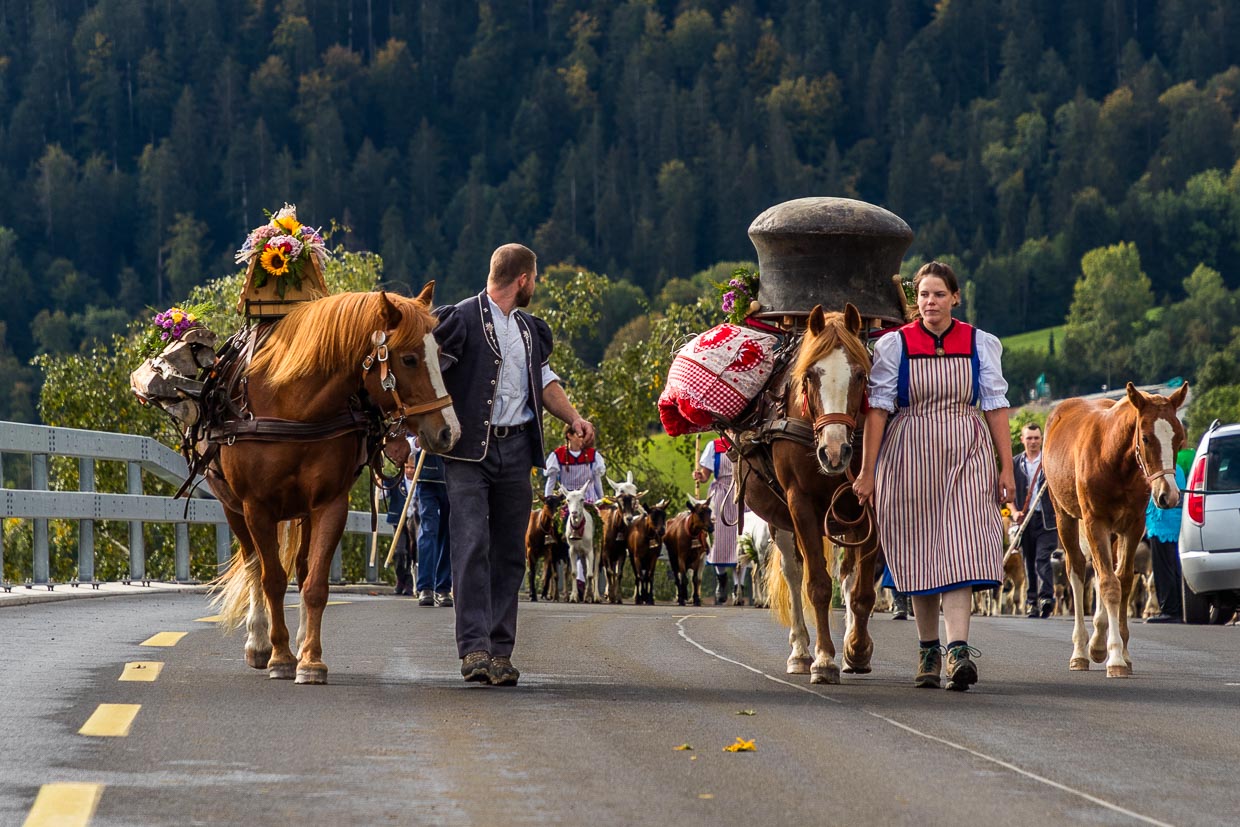
Summering and the sound of the mountains
For centuries, Swiss farmers have sent their cows, goats, sheep and horses up to the mountains to graze during the warmer months. Summering originated in the Middle Ages to preserve the precious grass in the valleys for the winter cattle. This ancient custom has transformed the landscape into a patchwork of forests and pastures and is so important that the preservation of this cultural landscape is enshrined in the Swiss constitution. The mountain farms receive state subsidies to keep the pastures free. Due to the warmer temperatures, trees are now even growing above the old tree lines. Many typical Swiss traditions have developed from summering, such as the production of alpine cheese in the alpine huts, hiking trails through fragrant alpine meadows and the ringing of cowbells. The sound of the bells echoing off the mountain walls is like an endless concert and the unmistakable sound of the Swiss mountains.
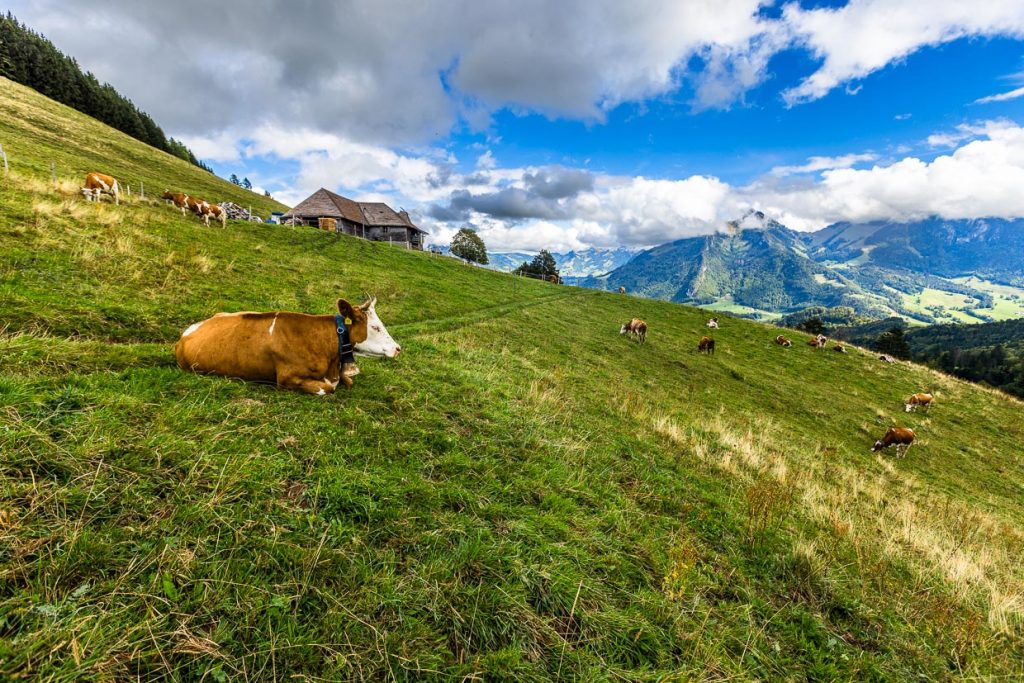
In the Alpine communities of Switzerland, the departure from the Alps at the end of the summer is a celebration of this centuries-old way of life. When they return to the valley, the herding families replace the small bells on their cows with huge traditional bells to announce the event. The cows know that the departure is imminent when they wear the large bells and are decorated with flowers. There is a clear hierarchy within the herd. On their way down into the valley, the older cows lead the way, while the younger cattle are more timid and follow at the back of the group. The cows wear beautiful floral decorations and the huge bells hang from wide leather straps around their necks.
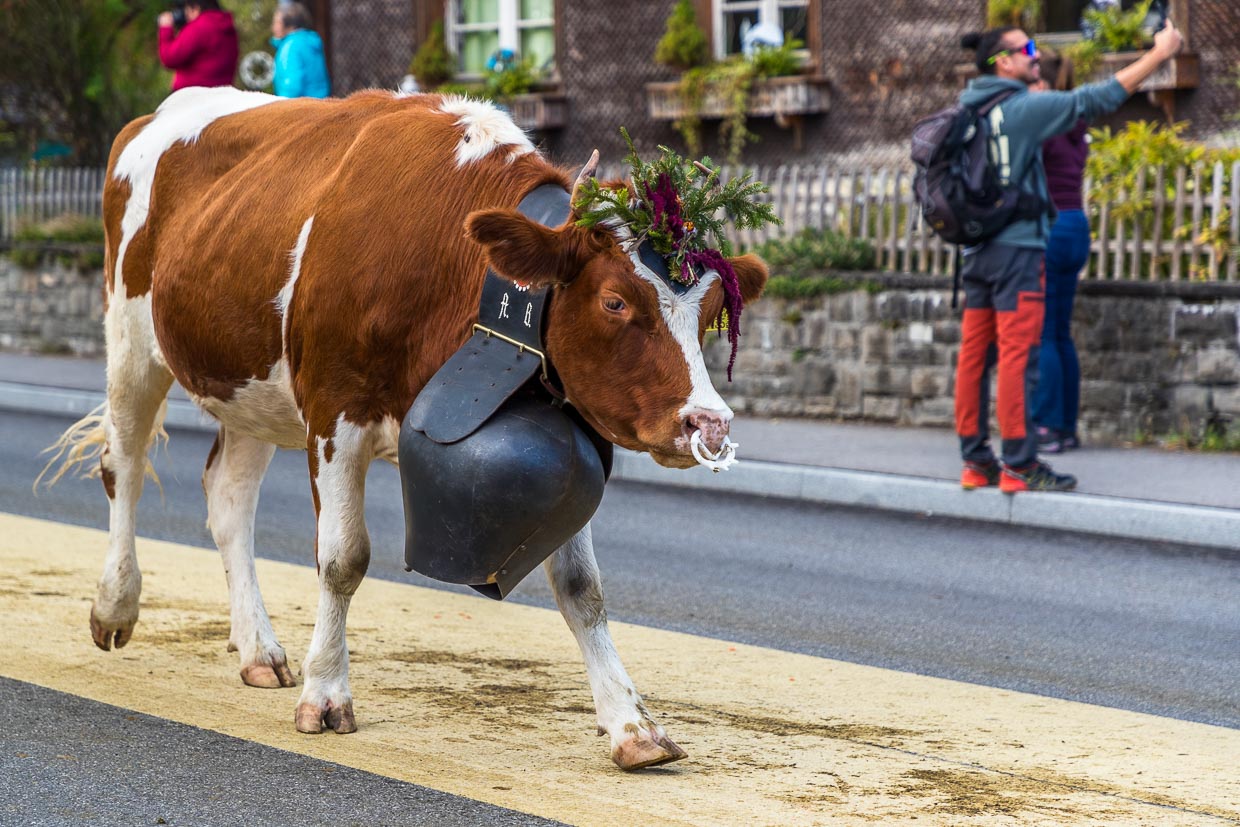
In Plaffeien, many people have now gathered along the main street. There is a festive atmosphere with everything that goes with it. Local cheese is sold in the Märetgässli. Almost all the shepherd families who pass through the village have made cheese on the alp in summer. In addition to the well-known cheeses such as Vacherin Fribourgeois and Gruyère, semi-hard cheeses made from raw milk such as Mutschli, Jauntaler and raclette cheese are also on sale. Around two o’clock in the afternoon, the last herdsmen’s family passes through the street. The summering is over for this year, the animals have returned to the farm. Families and helpers celebrate their return with a meal together.
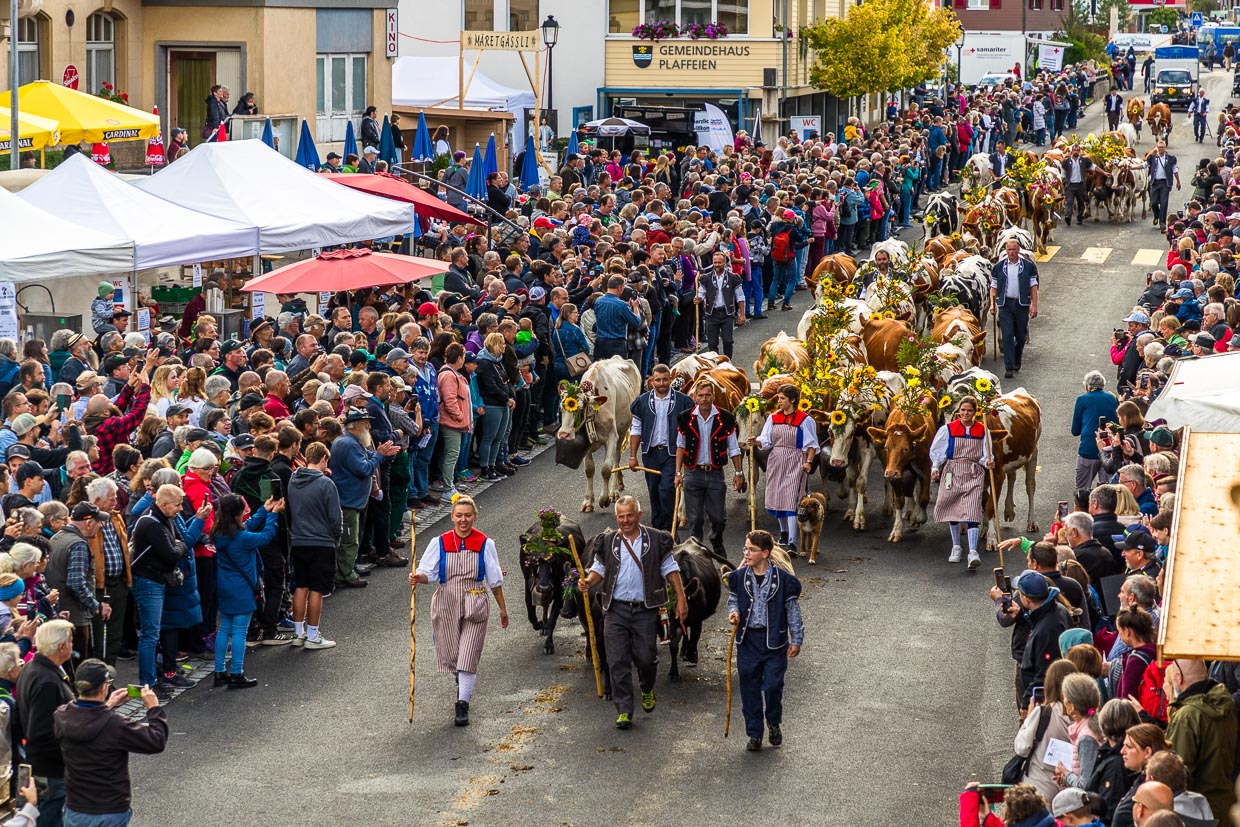
The end of summer grazing?
In December 2023, the Swiss tradition of summering was added to the United Nations Intangible Cultural Heritage List by UNESCO. But climate change is threatening this tradition. Warmer temperatures, glacier retreat, less snow and earlier snowmelt are forcing farmers across Switzerland to adapt. In 2022, only 10 shepherd families took part in the Alpine cattle drive in Plaffeien. Many had to return to their farms earlier. The alpine huts often have no water reservoir. The water for the animals and the daily cleaning of the cheese dairy was always taken from the natural streams in the area.
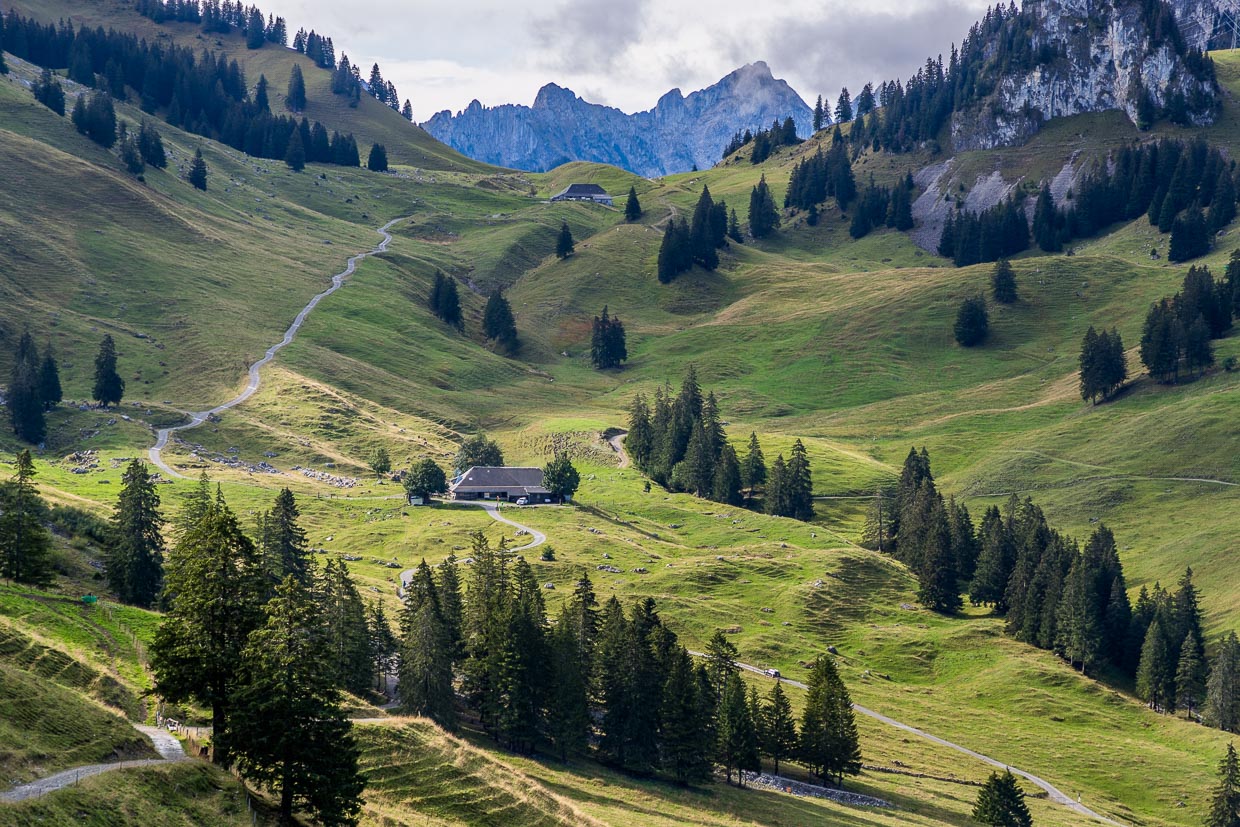
The water shortage was so acute that the Swiss army had to help with express deliveries. For a long time, Switzerland was considered Europe’s water tower, where the winter snow accumulated and gently melted in the warmer months to feed first small streams and then the larger rivers with water. Today, shepherd families on the alpine pastures are increasingly running out of water. The Swiss government is trying to counteract the changes and preserve Alpine traditions. Major infrastructure projects such as the construction of water reservoirs have been initiated to bring water to the mountain peaks for the grazing animals in the summer months.
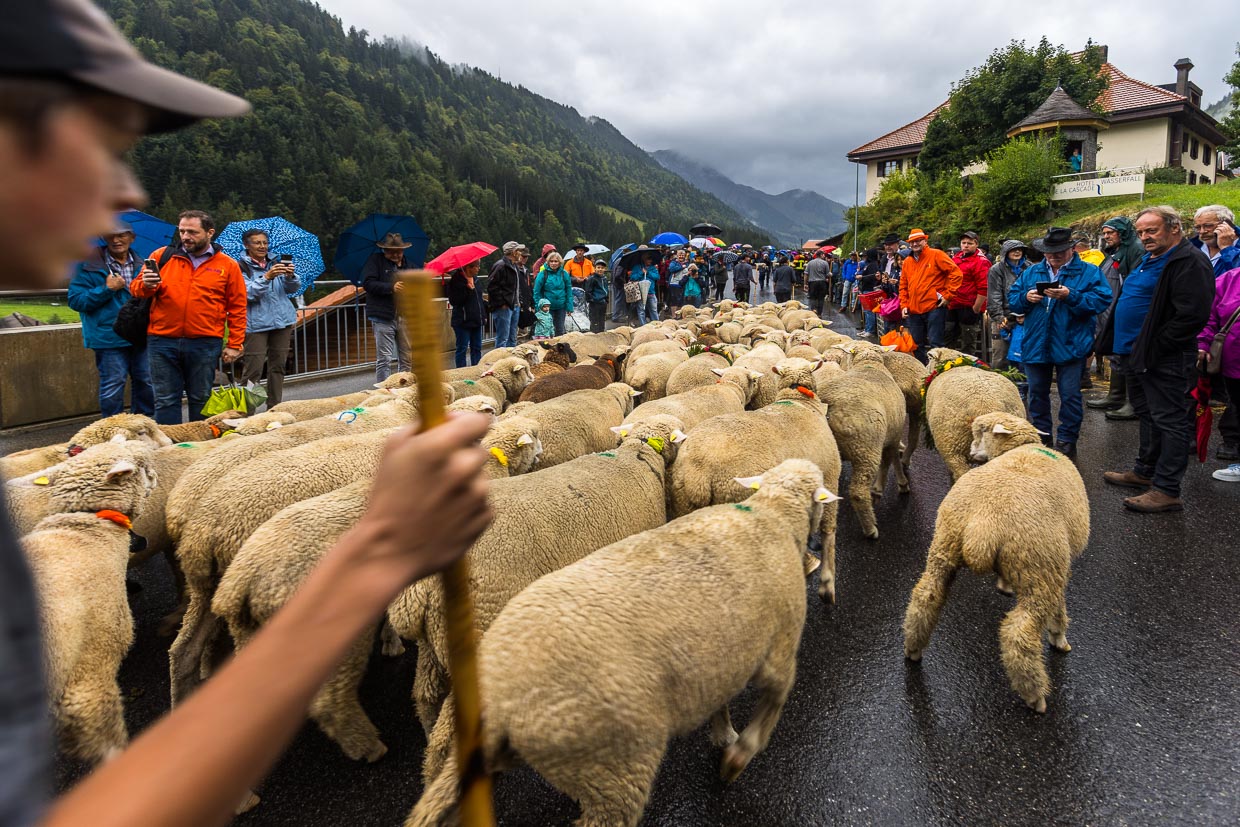
Schafscheid in Jaun
In Jaun, also in the canton of Fribourg, the end of the sheep summering has been celebrated for over 400 years with the Schafscheid. This is an autumn market with many stalls, which takes place every year on the Monday after the Federal Day of Prayer. On this rainy Monday, more than 450 sheep are driven into the village. Temporary fences have been erected on the narrow main street. The sheep drive is also a day of reunion. Shepherds meet their friends and family, a white herding dog sees his mistress again after a long summer on the alp and puts his big paw on her arm and the farmers receive their livestock. The Schafscheid also involves deciding which animals will go to the slaughterhouse and which will be fattened up in the barn at home. To this end, an auction is held near the gates where the sheep are now crowded together.
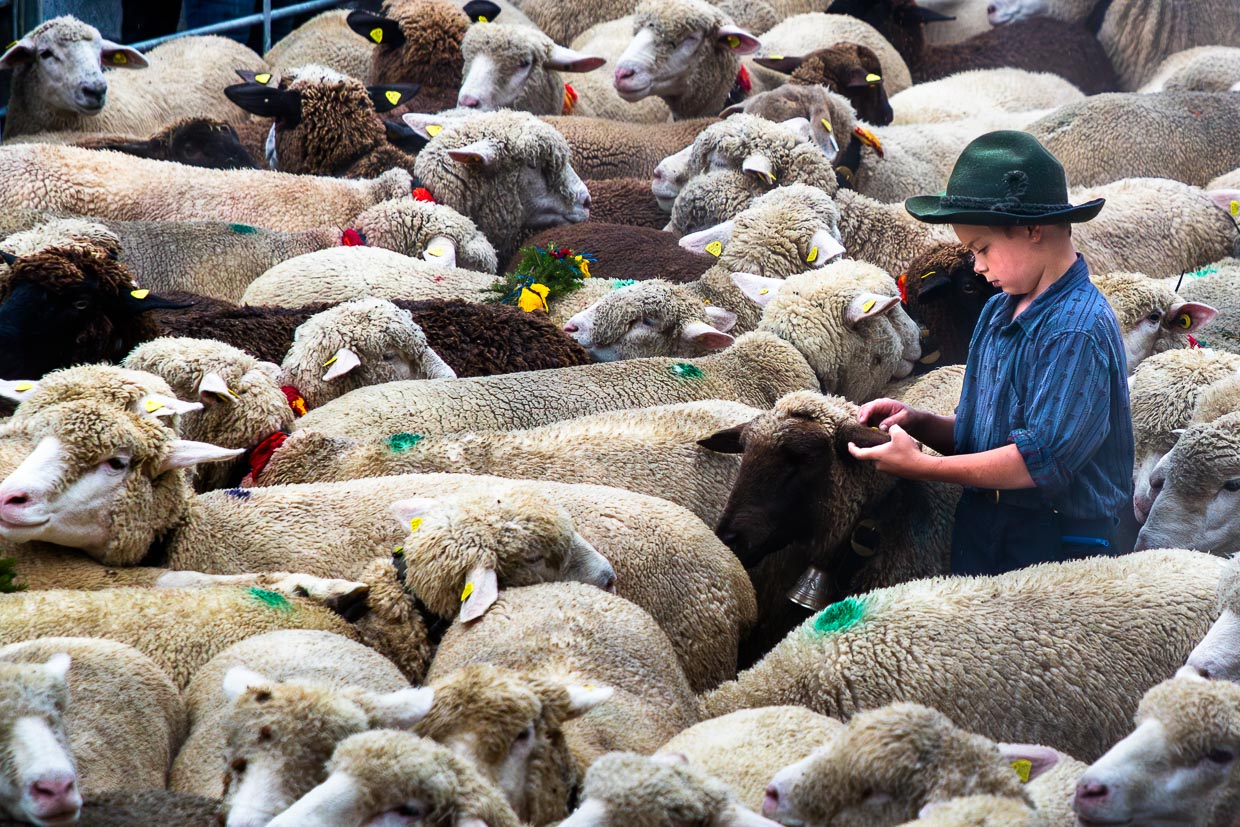
Individual animals are taken out of the fence. The auctioneer and the prospective buyers stand by. The animals are weighed. A sheep weighs between 45 and 50 kilograms. There are also older ewes that weigh 120 kilograms. A buyer checks the fat content with a trained grip on the neck. The auctioneer mumbles a few figures in French. If a deal is struck, the buyer marks his animal with a colored line on its back. On this day, 90 animals are weighed and sold. Once the business is done, everyone heads to the surrounding restaurants and market stalls. There is plenty to eat, including a sheep’s meal. It includes, how could it be otherwise, all kinds of lamb.
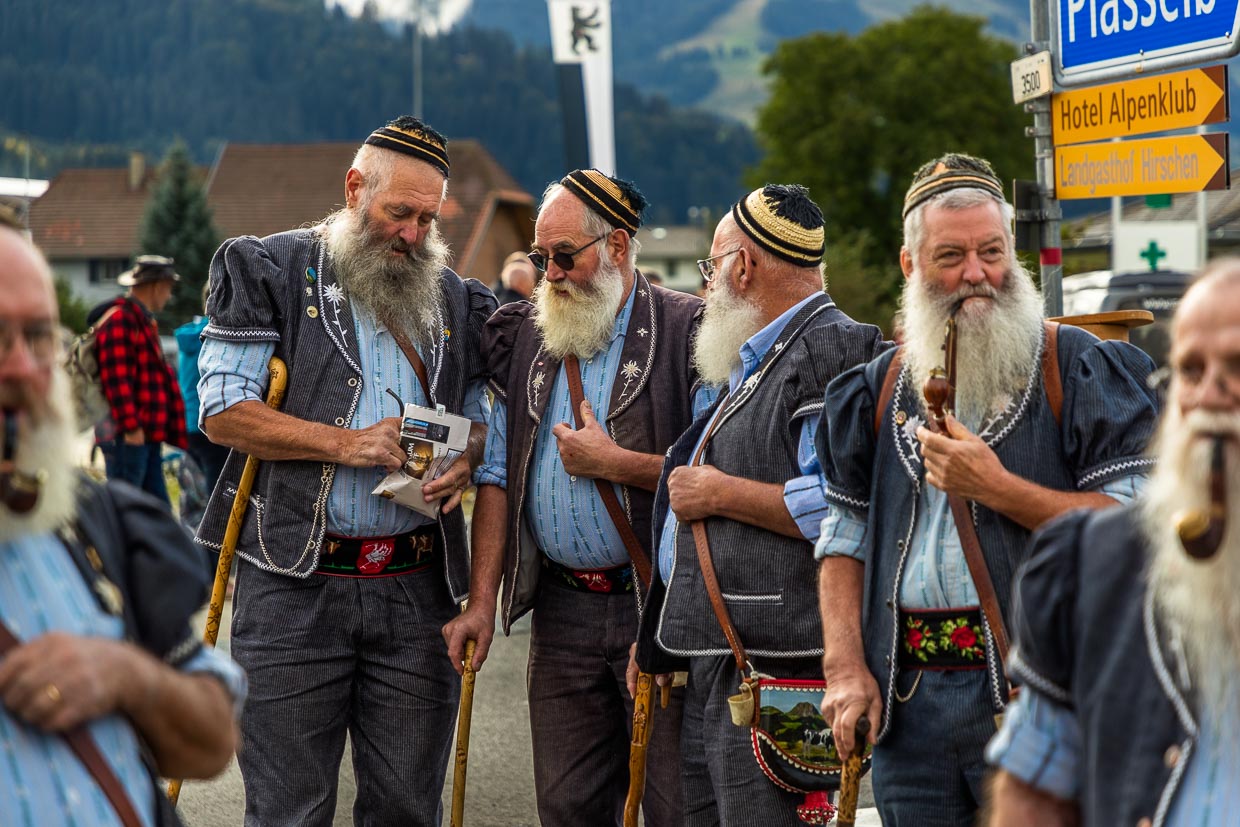
Traditions for the bucket list
Traditional transhumance, also known as transhumance, is widespread throughout the Alps, including Austria, Italy and Germany. If you want to travel to the Alpine region in September or October, it’s worth taking a look at the traditional festival dates. The most important Alpine processions in the canton of Fribourg take place in Semsales, Charmey, Schwarzsee, Albeuve, Plaffeien and Jaun. With a bit of luck, the bearded men of Gruyère will also be there to sing the Fribourg anthem Liyoba. These men exude pure tradition, from their white beards to the small salt pots hanging from their valuable leather bags, the Loyi. The canton of Fribourg is also particularly attractive from a culinary point of view, as the Bénichon festival, or Kilbi in German, is celebrated here on the second weekend in September and the second Sunday in October. It is a delicious festival where a Bénichon menu with seven sumptuous courses brings together many traditional products from the Fribourg region. Formerly a family celebration, the Kilbi menu is now also offered in many restaurants.
The research was supported by Fribourg Tourism

